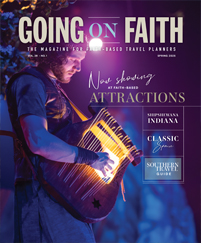If you’ve been to New Orleans, you’ve probably been to Jefferson Parish — likely without even knowing it. Parish county lines are largely invisible and unimportant to visitors, but they do make a difference, especially when it comes to local pride and bragging rights.
New Orleans, along with its myriad attractions and temptations, is in Orleans Parish, but a different and complementary world is right next door in Jefferson Parish, which often gets abbreviated to “Jefferson.”
If you’ve landed at Louis Armstrong International Airport, you’ve been to Jefferson. If you’ve felt the breeze off Lake Pontchartrain at Lakeshore Park, you’ve been to Jefferson. If you’ve eaten more than your share of charbroiled oysters at the original Drago’s Seafood Restaurant, you’ve been to Jefferson.
The folks at Visit Jefferson Parish are delighted to have the huge visitor magnet of New Orleans as their neighbor, but they urge visitors to go beyond Bourbon Street, the Garden District and streetcars to explore their turf, too. There’s plenty to build an itinerary in Jefferson and then toss in some New Orleans time as a bit of lagniappe, local lingo that means “a little extra.”
Jefferson Parish is on both sides of the Mississippi River and stretches from the shores of Lake Pontchartrain —actually an estuary, not a lake— down to the tip of Louisiana at Grand Isle.
More proof that parish lines aren’t necessarily important here is the fact that to drive to Grand Isle, you have to take a circuitous route that leaves Jefferson, crosses through St. Charles and Lafourche parishes and reenters Jefferson. Of course, the straight-line trip is by boat. The destination is Louisiana’s only sand beach and has an appealing state park.
Like much of Louisiana, Jefferson’s history is a gumbo of influences. You’ll find touches of French, Italian, Spanish and German immigration, and three historic districts to explore: Westwego’s Sala Avenue, where a 12-foot mounted alligator named Salagator inhabits the Westwego Historical Museum; Kenner’s Rivertown, said to be the spot where French explorers first set foot in today’s metro New Orleans; and Old Gretna, settled by German immigrants in 1836.
Jefferson’s promoters like to say that, just like New Orleans, Jefferson has a wild side, too. The difference is that the wild side of Jefferson is the natural world of alligators, swamp tours, egrets and tarpons. Jefferson has a grand mix of state parks, the territory of pirate Jean Lafitte, wetlands and opportunities to explore afloat in kayaks or excursion boats.
Here are three themes to work into a Jefferson itinerary.
Get Historic in Gretna
Lafayette Avenue and Huey P. Long Avenue are your two main drags to find reminders of Gretna’s past. The community’s welcome center is on Huey P. Long, as are the German American Cultural Center and the Jefferson Memorial Arch that perfectly frames the colonnaded city hall for photographs. Only minutes away on Lafayette are the David Crockett Firehouse — Louisiana’s oldest active volunteer fire company — and a blacksmith shop, where you can learn about hammering iron — and where you can also learn about quickie weddings. Back in the day, Gretna was rather lax about the red tape of wedding laws.
Be Bold in the Outdoors
The Barataria Preserve at Jean Lafitte National Historic Park and Preserve is a guaranteed treat for nature lovers. There are five boardwalk and gravel walking trails, plus four hiking trails. There’s a self-guided tour of the Pecan Grove, and a ranger leads walks every Wednesday through Sunday. Charlene Hale, director of leisure and partner sales at Visit Jefferson Parish, offers one admonition: “You may see an alligator right next to a boardwalk. Remember that you’re in its home, not the other way around.” You can get even deeper into the swamp on an airboat or swamp tour just 45 minutes from the French Quarter. Airboat Adventures in the town of Lafitte is a popular outfitter.
Chow Down on the Jefferson Oyster Trail
Eating well is often the top reason people enjoy this region, and Jefferson’s contribution is the Louisiana Oyster Trail. The trail originated in 2012 and today features 20 restaurants from Lake Pontchartrain to the Gulf of Mexico. Many are ready for groups with much of Louisiana’s annual haul of 12 million pounds of shucked oysters. Among them are Drago’s, which claims the distinction of having created charbroiled oysters, in Metairie; Perino’s Boiling Pot in Harvey; and Gattuso’s and the delightfully named Café 615 Home of Da Wabbit, both in Gretna.










